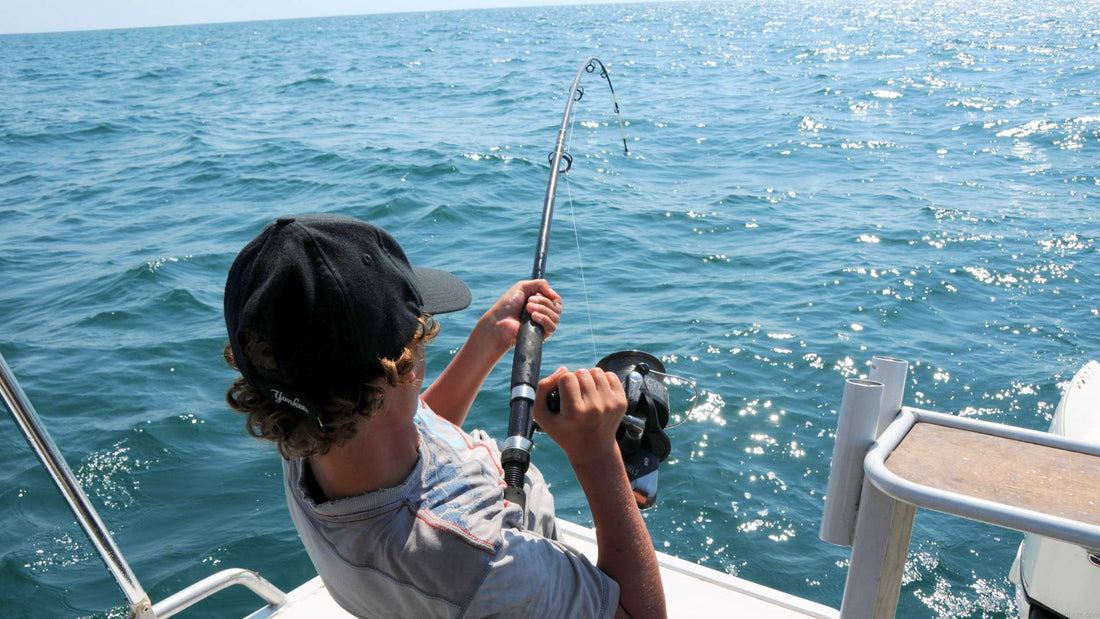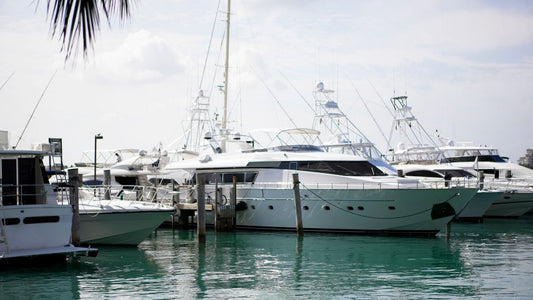
Inshore vs. Offshore Fishing: What’s the Difference?
Nicholas HeislerShare
Fishing is a beloved pastime enjoyed by millions around the world. Whether you're a weekend warrior casting your line from a small skiff or a seasoned angler heading miles offshore in search of a trophy catch, fishing offers endless excitement and adventure. But when it comes to choosing between inshore and offshore fishing, many anglers find themselves asking: what's the difference?
Understanding the unique characteristics of each type of fishing can help you determine which is best suited for your goals, skill level, and resources. In this guide, we'll break down the key differences between inshore and offshore fishing, including locations, target species, required gear, pros and cons, and expert tips to maximize your experience.
What is Inshore Fishing?
Definition & Characteristics
Inshore fishing refers to angling that takes place in shallow waters, typically less than 30 meters (100 feet) deep. It is usually conducted within a few miles of the shoreline, in areas where the water is calm and easily accessible.
Common Locations
Some of the most popular inshore fishing spots include:
- Bays and estuaries - Sheltered waters that provide a rich habitat for fish.
- Mangroves and flats - Ideal for sight fishing and targeting species like redfish and snook.
- Coastal shorelines and piers - Easily accessible and great for beginners.
- Tidal creeks and rivers - Brackish water areas that hold a variety of fish species.
- Typical Target Species
Inshore fishing is known for its abundance of species, including:
- Redfish - A favorite among saltwater anglers, found in estuaries and flats.
- Snook - Known for their hard fights and preference for mangrove-covered shorelines.
- Speckled Trout - Often caught in grassy areas and near sandbars.
- Flounder - A bottom-dwelling fish commonly found in sandy and muddy areas.
Required Gear & Equipment
One of the benefits of inshore fishing is that it requires minimal equipment compared to offshore fishing. Here's what you'll need:
- Rod and reel - Medium to light spinning tackle.
- Live or artificial bait - Shrimp, mullet, soft plastics, or topwater lures.
- Small boats, kayaks, or shore access - Inshore fishing can be done from small vessels or even the shore.
What is Offshore Fishing?
Definition & Characteristics
Offshore fishing, also known as deep-sea fishing, takes place in waters deeper than 30 meters (100 feet), often many miles away from land. This type of fishing requires larger boats, specialized gear, and greater preparation due to its more demanding conditions.
Common Locations
Anglers looking for an offshore adventure typically fish in:
- Open ocean - Deep waters far from shore.
- Reefs and wrecks - Structures that attract large predatory fish.
- Oil rigs and underwater mountains - Offshore structures teeming with marine life.
- The Gulf Stream and oceanic currents - Areas where baitfish gather, attracting large game fish.
Typical Target Species
Offshore fishing presents the opportunity to catch some of the most sought-after big-game fish, including:
- Tuna - Hard-fighting and fast-swimming species.
- Marlin - A prized catch known for its incredible acrobatics.
- Mahi-Mahi (Dorado) - A colorful fish that provides an exciting fight.
- Sharks - Various species, offering thrilling battles.
Required Gear & Equipment
Offshore fishing requires a higher investment in equipment, including:
- Heavy-duty rods and reels - Designed for deep-sea fishing.
- Trolling lures and bait - Large live bait or artificial trolling baits.
- Boats equipped for offshore conditions - Vessels with deep hulls and powerful engines.
- GPS, fish finders, and safety gear - Essential for navigation and safety far from shore.
Key Differences Between Inshore and Offshore Fishing
1. Water Depth & Distance from Shore
- Inshore - Shallow waters up to 30 meters (100 feet), close to the shore.
- Offshore - Deep waters beyond 30 meters (100 feet), often 20+ miles from land.
2. Boats & Equipment
- Inshore fishing can be done from small boats, kayaks, or even from the shore, using lighter tackle.
- Offshore fishing requires larger boats with advanced navigation and safety equipment, as well as heavy-duty rods and reels.
3. Fishing Techniques
- Inshore techniques include casting, drifting, fly fishing, and jigging.
- Offshore techniques include trolling, deep-dropping, and chumming to attract large fish.
4. Trip Duration
- Inshore fishing trips usually last between 4 to 6 hours.
- Offshore trips often range from a full day (8-12 hours) to multi-day excursions.
Pros & Cons of Inshore Fishing
Pros
- More accessible for beginners and families.
- Requires less gear and investment.
- Typically takes place in calmer waters, reducing seasickness.
- Shorter trips make it ideal for quick outings.
Cons
- Limited to smaller fish species.
- Can be crowded in popular fishing areas.
- More affected by tides and water conditions.
Pros & Cons of Offshore Fishing
Pros
- Offers a chance to catch larger, trophy-sized fish.
- Provides an adventurous, deep-sea experience.
- Less fishing pressure in open waters, meaning less competition.
Cons
- Requires more planning, equipment, and investment.
- Trips are longer and require more endurance.
- Rougher waters increase the risk of seasickness.
Which Type of Fishing is Right for You?
Choosing between inshore and offshore fishing comes down to your personal preferences, experience level, and fishing goals. Consider the following:
- For beginners or those who prefer a quick, easy fishing trip - Inshore fishing is ideal.
- For those seeking an adrenaline-pumping adventure and bigger catches - Offshore fishing is worth the investment.
- If you want a balance of both - Many charter services offer nearshore fishing, which combines elements of both experiences.
Both inshore and offshore fishing offer unique and rewarding experiences. Whether you enjoy the convenience and accessibility of inshore fishing or crave the excitement of offshore big-game fishing, there's no wrong choice. Understanding the differences, advantages, and challenges of each can help you make the best decision for your next fishing adventure.
So, are you ready to cast your line? Whether you're fishing from a quiet bay or battling a marlin in the deep sea, there's always a new adventure waiting for you on the water.
When it comes to keeping your fishing boat clean, look to Captains Preferred Products' boat cleaners and chemicals. Find everything you need to keep your vessel squeaky clean all season long.




